Introduction to Sedum: A Succulent Surprise
If you’ve ever stumbled upon a garden that seemed to wink back at you with a kaleidoscope of lush, fleshy leaves topped by starry blooms, you’ve likely had an encounter with the sedum family. Often referred to as ‘stonecrops’ due to their uncanny ability to thrive in rocky situations, sedums are a wonder of the horticultural world. But what does sedum look like, and why has it captured the hearts of green thumbs and newbie gardeners alike?

Originating from diverse habitats that span across the Northern Hemisphere, sedums have adapted to an impressive range of environments, from arid deserts to alpine nooks. This tough-as-nails survivalist strategy translates into an incredibly low-maintenance charge for gardeners. The general description of sedum spans from ground-hugging mats that soften the edges of paths to statuesque spectacles that yield honey-scented blooms; their versatility is boundless.
Their popularity isn’t simply rooted in their resilience or diversity. Sedums are a stunner in the aesthetics department, with foliage in seductive shades of green, dusky blues, and vibrant burgundies that transition with the seasons. Additionally, their formidable drought tolerance makes them an ideal candidate for eco-gardening and sustainable landscaping – think of them as nature’s water savers that refuse to compromise on splendor!
For those looking to weave a living tapestry in their outdoor spaces, rock gardens become a canvas where sedum plays a pivotal role. No matter the container – from a salvaged birdbath to the classic terracotta pot – these succulents rise to the occasion, morphing from mere plants to pieces of living sculpture.
Keen to learn more? Dive into our comprehensive guide on growing and caring for sedum plants and embark on a journey with these captivating succulents that promise a garden brimming with wonder and ease.
Visual Guide to Sedum: Appearance and Characteristics
Imagine strolling through a rock garden gleaming with jewel-like foliage. That’s the sedum’s playground! The sedum, also known as stonecrop, is a hardy charmer that can perk up any space with its plump, fleshy leaves and resilient personality. Let’s embark on a delightful exploration of this succulent’s visual spectacle!
First off, let’s talk leaves. Sedum’s leaf shape is quite the sight, ranging from tightly-clustered rosettes to sprays of elongated foliage. Oblong or paddle-shaped, they often present a textured surface that’s a treat to touch. The leaves can be a single tone of deep green or a tapestry of colorful hues, painting a picture of nature’s artistry that changes with the sunlight’s dance. Expect to see shades of blue-green, burgundy, cream, and sometimes, a surprise of pink edges!
Size and stature, you ask? From petite groundcovers just a few inches tall to statuesque varieties stretching up to three feet, sedums offer a size for every scene. Whether they’re spilling over the edge of a container or standing tall among a flowering border, these succulents know how to make a statement.
The overall plant structure of sedum is just as diverse. Some types feature dense, mound-forming habits that work as excellent ground covers, while others grow more upright with stems that seem to reach for the sky. And let’s not forget the starburst of flowers that bloom atop these stems in late summer through fall—sedum flowers are like fireworks in plant form!
Speaking of variety, did you know that the care for sedums can be just as diverse as their appearances? For a perfect partnership of visual and practical pleasures, you might explore topics on nurturing these garden gems in an extensive guide to sedum plant care. It’s your gateway to becoming a sedum whisperer!
Now, feast your eyes on this: a snapshot capturing the intricate diversity of sedum. From tiny ground-huggers to larger-than-life beauties, each brings a unique vibe to the green space they inhabit.
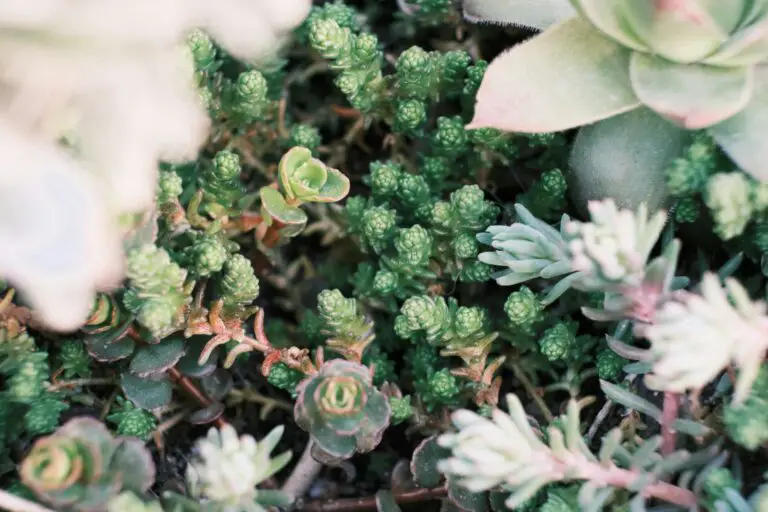
As your hands glide over their waxy or velvety textures, let the tactile experience remind you that nature’s innovations are often found in the smallest details. Whether it’s the sedum’s ability to withstand drought or its penchant for easy propagation, every characteristic of these plants reinforces their reputation as both a gardener’s ally and a visual delight.
So, as you consider adding a touch of sedum to your life, remember this guide to their appearance and characteristics. With their easy-going nature and stunning variety, sedums are ready to transform any corner into a vibrant, living piece of art.
The Color Palette of Sedum Plants
Envision a painter’s palette, brimming with shades that capture your gaze. Now, transpose that image to the world of flora, specifically to the sedum realm, and you’re met with a living tapestry that is nothing short of breathtaking. Sedum plants, those hardy succulents adored by garden enthusiasts and casual admirers alike, flaunt a spectrum of colors that could rival any artist’s finest work.
Setting foot into a garden speckled with sedums is akin to stepping into a kaleidoscope of hues. Think of the sedum ‘Autumn Joy’ with its brooding rosy-pink blossoms, casting a warm, inviting glow among your greenery. But these plants are not just limited to the greens, and don’t you think for a second that they shy away from a vibrant display! Sedums can burst with fiery reds, reminiscent of a smoldering ember nestled in your garden bed. Picture the sedum ‘Dragon’s Blood’, with leaves that intensify into a blood-red hue as the sun kisses them goodbye at the day’s end.
And for those drawn to cooler tones, sedums deliver with aplomb. The shimmering silver-blue foliage of ‘Blue Spruce’ sedum offers a serene, soothing presence that calms the senses. It’s like looking at a swath of a clear sky, right there beneath your feet. Then, as if plucked from a regal tapestry, there are varieties like ‘Purple Emperor’, boasting rich purples that seem to absorb the light, lending an air of opulence to your personal paradise.
Intrigued about how to mix and match these colorful sedums in your garden? The video below provides insights into creating a stunning perennial border using these versatile plants. Learn from the expertise of top gardeners and transform your outdoor space into a painted canvas alive with sedum’s vibrant colors.
To the untrained eye, a sedum’s color might appear static, but those with a discerning gaze will notice the subtle shifts that occur with the changing seasons. The leaves might brighten to celebrate the springtime or deepen in color as a nod to the autumnal chill. Not just a feast for the eyes, the sedum’s ever-changing palette is a testament to its adaptability and resilience.
While some plants are divas, demanding precise conditions to grant you a glimpse of their beauty, sedums are the unassuming stars of the garden. They are blissfully content in most settings and ask little of the caretaker, save for admiration of their stunning hues. Who knew that such low maintenance could indeed yield such high visual returns?
Diversity in Form: Types and Varieties of Sedum
Step into the splendid world of sedums, where these succulents take on myriad forms, each more captivating than the last. It’s like wandering through an eclectic sculpture garden; no two varieties are quite the same. From cascading stonecrops that flow like waterfalls over the edges of pots, to stout, upright specimens standing sentinel in the garden bed—sedums are a study in diversity.
Visual Feast: The Color Palette of Sedum
Picture the hues of the setting sun captured in fleshy leaves, from muted pastels to fiery crimsons. Sedums offer a color spectrum that can either blend seamlessly or pop dramatically against other garden elements. There’s ‘Autumn Joy’ with its broccoli-like heads that ripen from pale pink to a robust russet, or ‘Dragon’s Blood’ sedum that spreads a carpet of deep red. Each type of sedum has its unique color identity that adds to the rich tapestry of your garden design.
Textures and Shapes: The Touchable Sedum
The tactile experience of sedums is just as varied as their colors. Run your fingers over the powdery-coated ‘Cape Blanco’, with its tight rosettes, or the rubbery, jelly bean-like foliage of ‘Burrito’ sedum. Some types mimic spiky sea urchins, while others, like the popular ‘Angelina’, present fine, needle-like leaves that add a soft texture to the garden.
From Ground Covers to Towering Clumps
The size and growth habits of sedums are as diverse as their textures. Low-growing varieties work wonders in those tricky spaces where little else thrives, transforming them into living, breathing ground covers. For those looking to make a statement with height, the ‘Matrona’ sedum towers beautifully, offering both vertical interest and a feeding station for pollinators with its nectar-rich blooms.
Whether nestled into rock gardens or lined along pathway edges, sedums have an adaptability that makes them a versatile choice for any garden situation. For more tried-and-true tips on keep your sedums and other succulents thriving, check out our guide on golden sedum care that’s packed with insightful information.
Feast your eyes on these delightful variants with a visual tour in this handpicked video:
Each type of sedum brings its own flair to the table—or the garden, in this instance. With such diversity, there’s a sedum to match every gardener’s dream, proving that these succulents are more than just tough drought-resisters; they’re a true celebration of variety in the plant kingdom.
Appreciating Sedum Flowers: Seasonal Beauty
Imagine a palette of vibrant colors splashed across a canvas of green – that’s the essence of sedum in full bloom. Sedum plants, also known as stonecrop, offer a visual treat that evolves with the seasons. With their plump, water-storing leaves and clusters of star-shaped flowers, they are the epitome of resilience and charm in the succulent world.
As the warmth of spring rolls in, sedum plants begin their transformation. Tiny buds emerge, hinting at the spectacle to come. By summer’s zenith, sedum bursts into a meteor shower of blooms, ranging from sunny yellows to deep pinks and purples. It’s not just a delight for the eyes; these flowers are a bustling hub for bees and butterflies, adding a dynamic layer of life to your garden tableau.
Diving deeper into the blooming patterns of sedum, each variety paints its own picture as the season’s progress. Take ‘Autumn Joy’, for instance, its flowers start with a gentle blush in late summer, then deepen to a robust copper as autumn paints the leaves with fiery hues. Imagine how these stout beauties can rejuvenate an otherwise waning garden, breathing life into the faded glory of summer’s end.
Moreover, it’s not just the colors that captivate. The structures of sedum flowers are a study in geometry, with neat rows of petals unfolding in mesmerizing symmetrical patterns. This inherent order is a stark contrast to the unruly wildflower fields, providing a visual anchor in your garden’s aesthetic landscape. Stand amidst a patch of blooming sedum, and you’ll feel enveloped by a sea of tranquility, each bloom an echo of nature’s perfection.
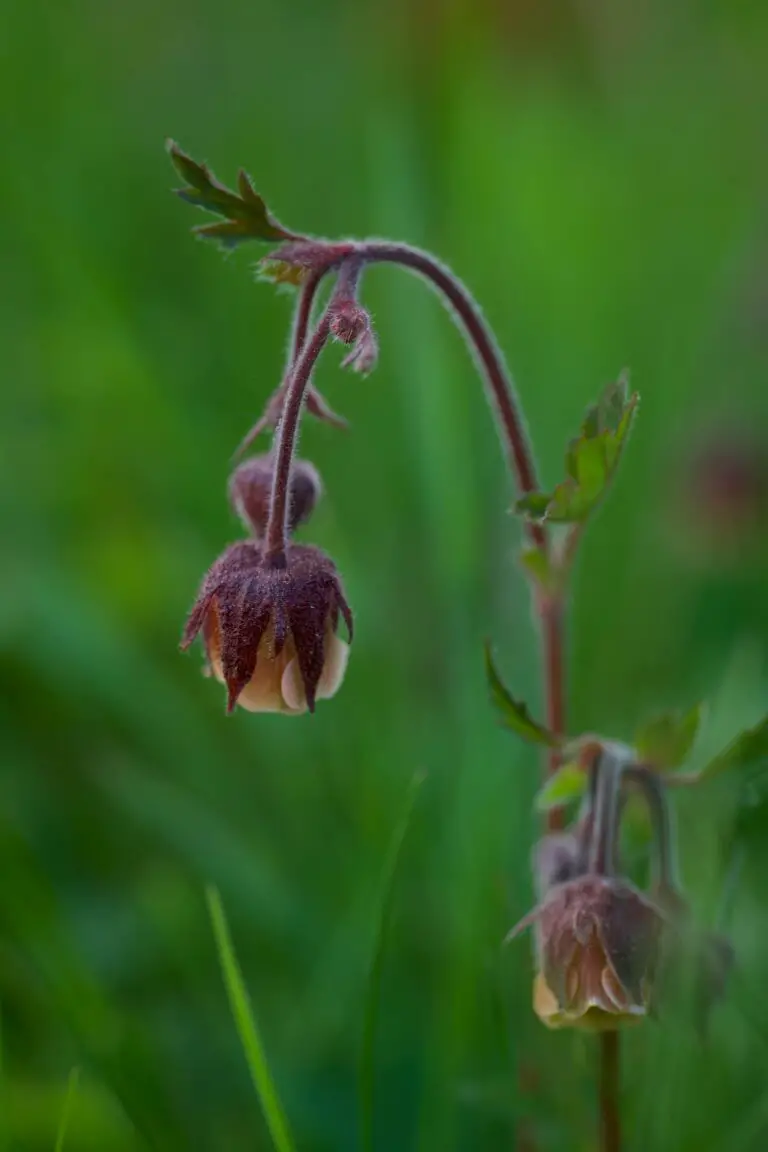
Yet, the beauty of sedum is not reserved solely for those with sprawling garden spaces. Urban dwellers find equal delight in these versatile plants. Sedum thrives just as exuberantly in containers on a sunny balcony as in rock gardens or arid landscapes. They are not mere plants but adaptable characters that bring an unassuming corner of a high-rise to life, proving that nature’s charm can find a stage in any setting.
As the curtain of winter approaches, sedum plants don’t merely bow out; they leave behind sculptural seed heads that stand stoic against the frosty air, offering a textured spectacle amidst the starkness of the cold season. It’s a plant that not only weathers the elements but relishes them, changing its cloak with each whisper of the changing breeze.
Whether tucked between rocks or perched on a windowsill, sedum flowers invite a moment of appreciation for their understated yet striking seasonal show. In a world that races through the seasons, sedum reminds us to pause, to observe the ebbs and flows of nature’s cycles, and to find joy in the simple spectacle of a flower in bloom.
Incorporating Sedum into Your Garden: Design Ideas
Let’s roll out the green carpet and introduce the versatile sedum as the star of your garden drama! Whether you’re looking to enliven a barren ground space, crafting a picturesque rock garden, or searching for the perfect co-star for your existing plant ensemble, sedum is ready to take on the role with effortless grace.
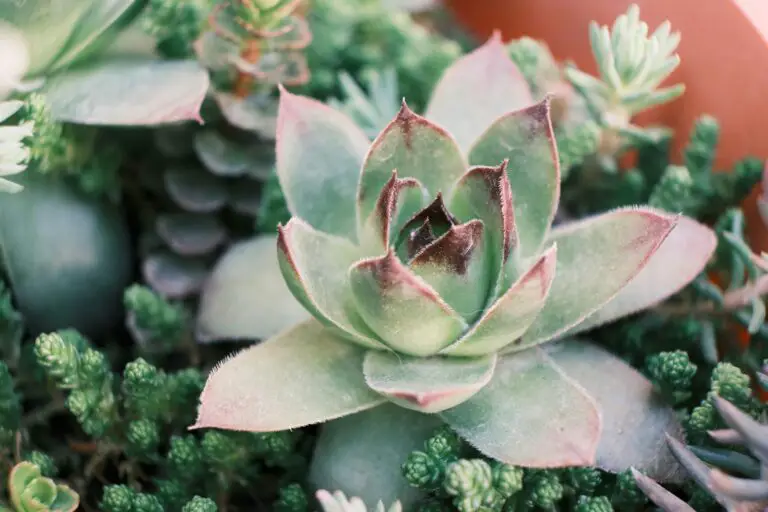
Imagine a vibrant tapestry spread at your feet, where various sedums serve as a lush ground cover. Their thick, juicy leaves and stems create a dense mat that suppresses weeds, making a low-maintenance yet aesthetic groundcover solution. From the vibrant ‘Dragon’s Blood’ to the golden sprawl of ‘Angelina,’ these hardy succulents weave a textured quilt that blooms with star-shaped flowers, attracting pollinators and admirers alike.
Rock Gardens: Nature’s Mosaic
Nature’s artistry shines in rock gardens, where sedum plays a pivotal role in capturing a wild, untamed essence within your garden borders. Picture the nooks and crannies among stones and pebbles, filled with the robust foliage of sedum varieties, thriving in harmony with the rough textures of your garden’s rocky tableau. Each plant stakes its claim, creating pockets of life that exude a calm, natural beauty. Discover how sedum’s resilience is celebrated among the stones on Unearthing the Resilience of Rock Gardens.
Companion Planting with Sedum
When it comes to sedum, it’s all about making friends. These sociable succulents enjoy rubbing shoulders with a wide array of garden companions. Picture them mingling with ornamental grasses, their structured plumes complementing sedum’s succulent foliage. Or envision the scene as they cozy up next to lavender, the soft purples subtly enhancing the sedum’s vibrant greens and fiery reds. Together, they create a textured landscape that’s as pleasing to the eye as it is functional, with both offering drought tolerance and a love for the sunlit stage.
Now, take these visions and start dreaming up your garden’s transformation. Sedum is more than just a pretty face; it’s a hardworking, versatile actor ready to make your garden design a blockbuster hit. So go ahead, incorporate sedum and let your garden tell a story of beauty, resilience, and harmony.
Maintaining the Splendor: How to Care for Your Sedum
Sedum, with its versatile beauty, is a gardener’s delight, but like any other cherished treasure, it requires a touch of thoughtful care. If you are looking to introduce a dose of nature’s charm into your life with these succulents, here’s your quintessential guide to help your sedum thrive.

The Right Start: Soil Secrets for Sedum Success
Let’s dig into the dirt! Sedums are not picky about where they lay their roots, but they do have a preference for well-draining soils. Picture this: lush sedums sprouting from a bed of sandy loam or gravelly soil, free from the dreaded water-logged doom. A real-life hack? Mix in some perlite or coarse sand with your regular potting mix, and watch as your sedums establish their home base with enthusiasm.
Let There Be Light: Sunlight and Shade for Your Leafy Companion
Imagine your sedum as a sunbathing beauty basking under the golden rays. Most sedum species adore full sun, their leaves turning vibrant shades when they soak up those UV delights. However, not all sedums yearn for a sun-drenched existence. If you’ve got a variety that favors a bit of shade, observe the light dance through leaves, offering a gentle reminder of nature’s rhythms and, of course, the needs of your sun-kissed friend.
The Watering Wisdom: Quenching Sedum’s Thirst the Right Way
Hydration is essential, but when it comes to watering your sedum, think of the golden rule: less is more. Sedums store water in their fleshy leaves, a clear sign of their self-sufficient streak. Therefore, overwatering is a sedum’s nemesis. Picture administering water as if you’re sprinkling just enough zest to enhance a dish—periodic, light, and just right. To avoid root rot, make it a ritual to allow the soil to dry out between waterings, and witness your sedum’s leaves remain plump and content.
With these care tips tucked into your gardener’s belt, you’ll become a true sedum whisperer, coaxing out the full splendor of these hardy succulents. Whether perched on your windowsill or gracing your garden paths, your sedum is set to flourish, a testament to your loving care. Watch, as with each passing season, your sedum rewards you with a lush, visual symphony of resilience and beauty.
Sedum Throughout the Seasons: Annual Growth Cycle
Imagine a verdant tapestry of succulents painting your garden with splashes of color and texture, and at the heart of this masterpiece is the sedum. As the curtain of winter lifts, your sedum embarks on a remarkable journey through the seasons. Let’s dive into the seasonal saga of these hardy, vibrant plants.
Spring: A Time for Reawakening
As spring whispers life into the world, your sedums awaken from their slumber. With the first warm embrace of sunlight, these determined succulents unfurl their fleshy leaves. Picture clusters of tiny, star-like buds preparing to garnish your garden with a constellation of colors. This period of vigorous growth invites you to witness the miraculous rebirth of your sedums, as they shake off the frost and reach for the sky.
Summer: Sedum’s Sun-Kissed Splendor
Under the relentless gaze of the summer sun, sedums flourish like sunbathing beauties. These drought-tolerant stars draw upon their succulent nature to store water, standing proud and unwavering even in the height of the summer sizzle. Green-roof gardeners and balcony aficionados, take note: your sedum will transform your space into a living celebration, demanding little while giving heaps of visual pleasure.
Fall: The Rustic Radiance of Blooming Sedum
As the year winds down, the sedum plants stage their grand finale. With cooler temperatures, the foliage undergoes a fiery transformation, and vibrant blooms emerge, bidding adieu to the retreating sun. Birds and butterflies dance attendance, adding a whimsical air to the scene. Your autumnal garden becomes an exhibition of burnt oranges, deep pinks, and golden yellows—a living tapestry stitched together by the hand of Nature herself.
Winter: The Stoic Survival of Sedum
As the chill of winter blankets the garden, sedums showcase their resolute spirit. While other plants may wither and retreat below the soil, many sedums stand their ground, their leaves taking on russet and purple tones. They teach us a lesson in endurance and quiet resilience, becoming sentinels of the sleeping garden, awaiting the next cycle of rebirth.
With each season, sedums reveal their dynamic character, offering a year-round theater of change and constancy. So, plant them once, and revel in their perennial performance; a show that only gets better year after year.
Troubleshooting Sedum Issues: Pests and Problems
As delightful as it is to have the sedum’s lush emerald or ruby foliage adorn your garden, these succulent beauties can face a siege from unwelcome visitors. Just like us, they have their fair share of troublemakers that prove the adage of life not always being a bed of roses—or should we say, a patch of sedums?
We’ll slice into the heart of sedum adversities and provide the antidote to the common critters and ailments that can dampen the vibrant spirit of these hardy plants. Imagine you’re a detective in your own botanical mystery, and we’re about to uncover clues that will restore order in your garden!
Be vigilant for signs of fatigue in your sedum. A healthy sedum, which should make you pause and admire its stout leaves, might present a disheartened look with droopy, discolored or holey foliage. This is your cue that some uninvited pests are feasting on your plant. Aphids, tiny green or black insects, siphon the life out of the leaves like miniature vampires. Similarly, sedum can be a snack stop for munching mealybugs, deceitful in their cottony white disguise.
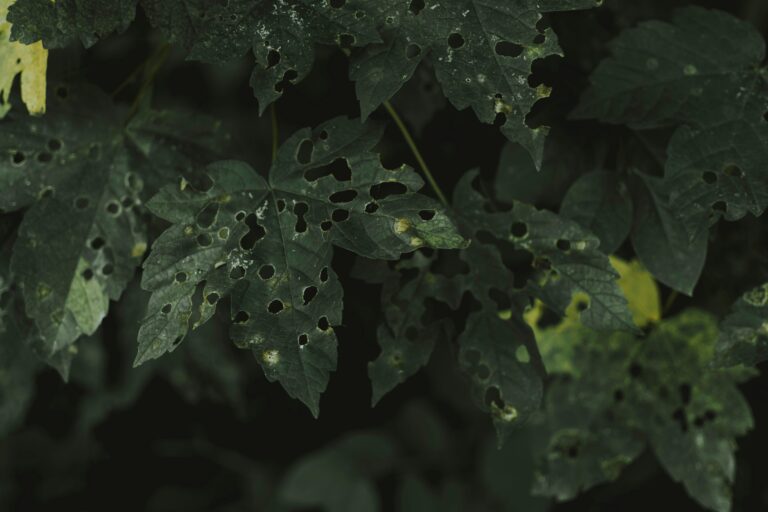
Does your sedum suffer from the Juliets and Romeos of the insect world, the incessantly breeding scale insects? These stubborn pests cling on and cover sedum stems and leaves, creating a sticky residue dubbed ‘honeydew’, which is not as sweet as it sounds. This sugary secretion can lead to sooty mold, another layer of woe for your poor sedums.
Take heart, dear gardener, for the battles with these bugs aren’t lost! Regular inspection of your sedums can lead to early detection, and action can be as simple as a forceful spray of water to dislodge young aphids. When water isn’t enough, enlist the help of insecticidal soaps or neem oil concoctions. They’re the swiss army knives against such pestering pests.
Real-life stories from committed sedum aficionados echo these strategies. Take Iris from Idaho, whose ‘Autumn Joy’ sedum turned from joyful to sorrowful when aphids attacked. A spritz of soapy water became her plant’s knight in shining armor. Or consider how Sam from Savannah outsmarted a scale invasion by introducing ladybugs, natural predators that gobbled up the problem. These are the tales of triumph you too can achieve by being proactive and persistent.
While these soft-bodied menaces get much of the attention, don’t forget to eye for signs of diseases like powdery mildew or root rot, especially in the overly wet conditions that sedum despises. Adequate spacing for airflow and attentive watering practices are your preventive prescriptions.
Arm yourself with know-how and a keen eye, and you’ll find your sedum can weather the pest parade. With the right tactics up your gardening gloves, expect to see your sedum stand strong, healthy, and every bit as enchanting as it should be. The comforting news is that sedum is generally resilient, and with some TLC, they’ll bounce back to bring joy and beauty to your green space. So, put on your gardening detective cap, and let the mission to protect your sedum begin!
Frequently Asked Questions
Are you curious about the alluring world of sedum, the easy-care gem in the succulent crown? Let’s dive into some common curiosities garden enthusiasts often ponder!
What Does Sedum Look Like?
Imagine a palette of greens, pinks, and purples stretched across rosettes and spiky foliage. Sedum comes in various forms, from ground-hugging carpets of leaves to tall, stately stalks topped with starry blooms. No two types are exactly alike, making sedum the chameleons of the plant world. Picture the illustrious Sedum spurium, with its fleshy leaves, sprawling out like a living tapestry across your rock garden.
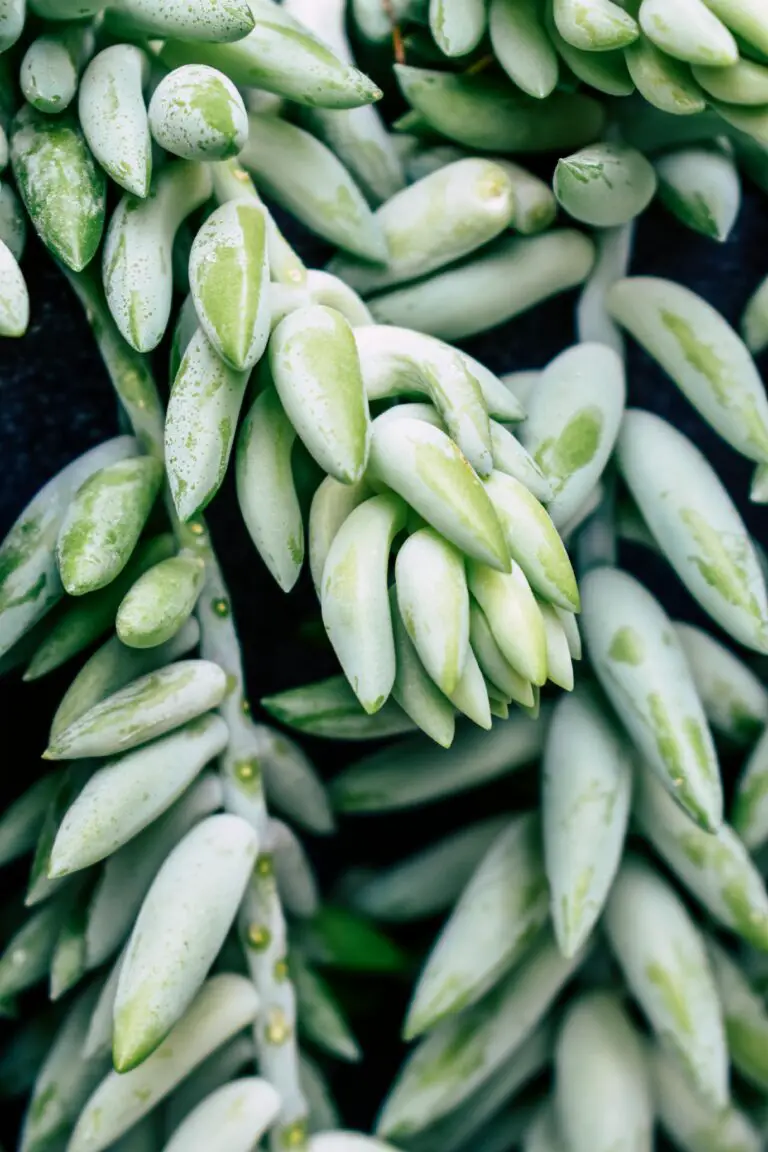
How Does Sedum Change with the Seasons?
Each season ushers in a new act in the sedum saga. Spring resurrects the plant with vibrant growth, summer sees it basking in its full glory, and autumn brings an enchanting transformation as many species don a crimson cloak. When winter’s chill arrives, the sedum performs a vanishing act, only to emerge again with the promise of spring’s warmth. For example, the ‘Autumn Joy’ variety, true to its name, presents a visual feast of deep rosy hues as the cold months draw near.
Can Sedum Survive Harsh Climates?
True survivors, these plants are the Houdinis of horticulture. Sedum can handle drought, forgetful waterers, and even rebound from extreme cold with a willpower that’s nothing short of astounding. There’s a reason they’re a favorite of those who seek a blend of beauty and resilience in their gardens. Picture them in high-altitude rockeries or sprucing up sun-parched sites where other plants would simply wave a white flag.
What Wildlife do Sedum Attract?
Fluttering wings and busy bees are common sights around these succulents. Sedum is like a dessert buffet for pollinators, offering a sweet nectar that’s hard to resist. Not just a feast for your eyes, but a bustling hub for butterflies, bees, and even hummingbirds seeking sustenance. When in bloom, a sedum’s flower clusters become the go-to spot for these delightful visitors, ensuring your garden is always abuzz with life.
How Do You Care for Sedum?
Low maintenance doesn’t mean no maintenance. While forgiving, sedum thrives best with a little TLC. Ensuring well-draining soil, ample sunlight, and the occasional drink of water will keep your sedum smiling. Overwatering is their kryptonite, so being hands-off can sometimes be the best approach. Remember, sedum is not demanding; it’s a laid-back friend adding consistent charm to your outdoor space.
Embarking on a journey with sedum is like discovering a treasury of botanical jewels, each with its own story and strikingleafy façade. Whether you’re starting a sedum collection or adding to an established one, the joy these succulent sensations bring is undeniable. From their aesthetic versatility to their tenacious nature, sedums are the unsung heroes in the garden, inviting you to unravel their mysteries one season at a time.



